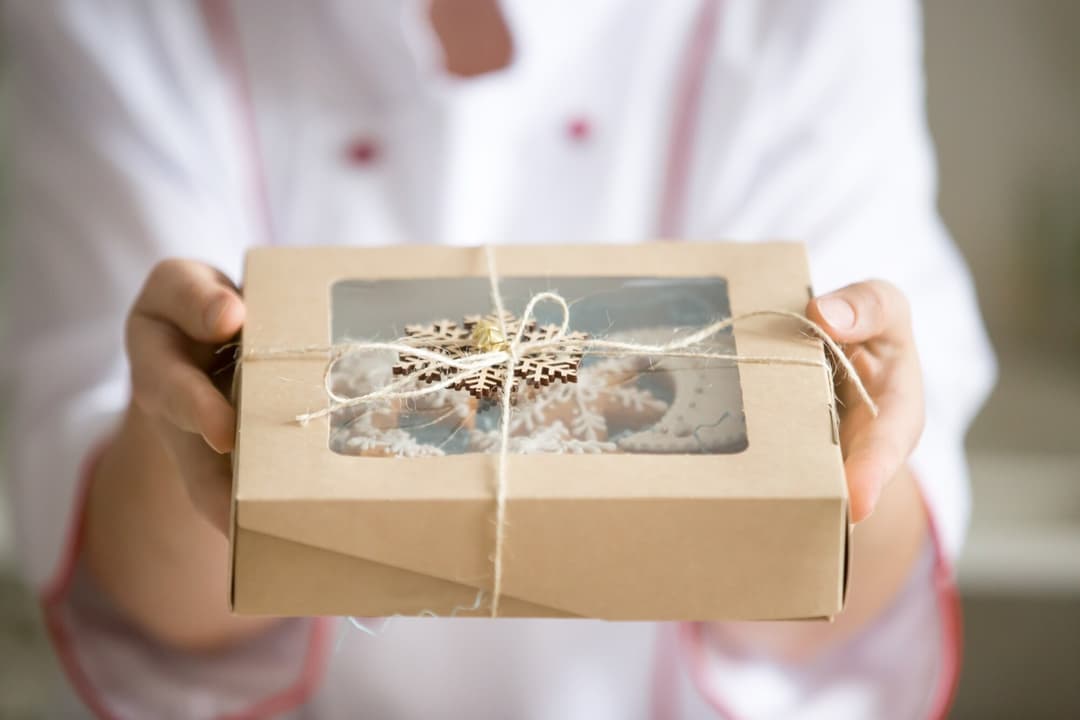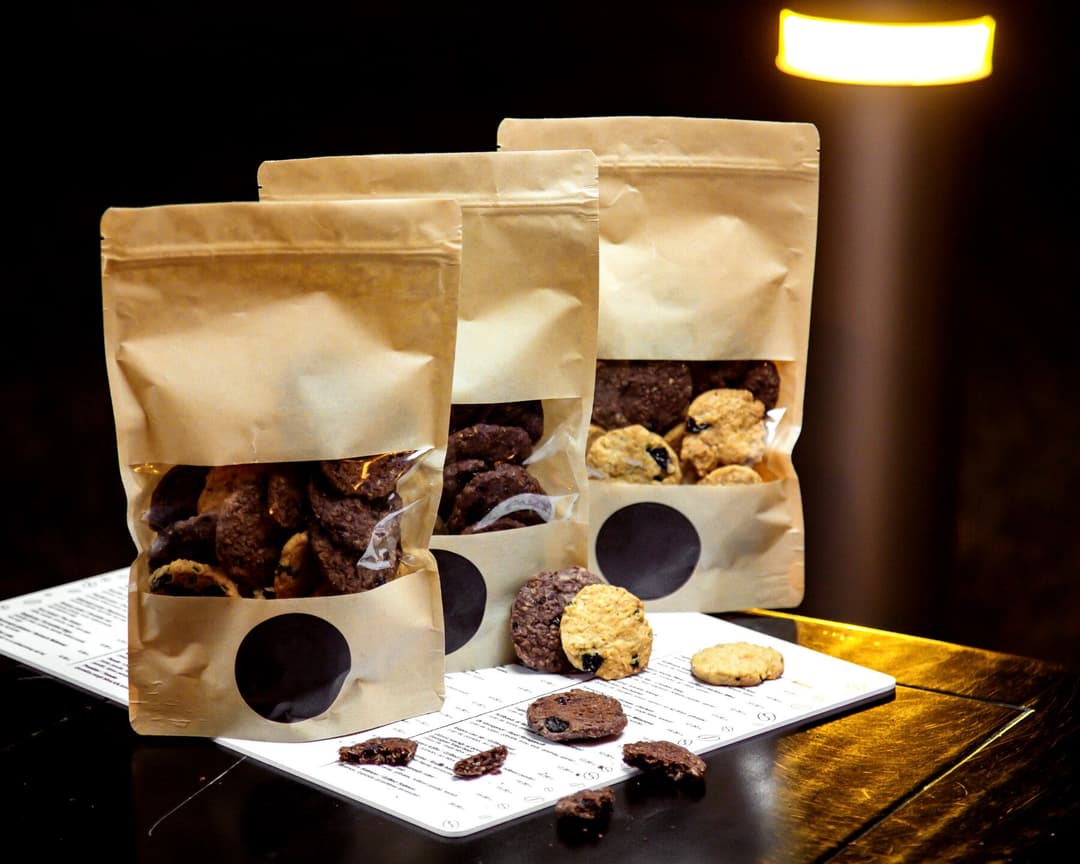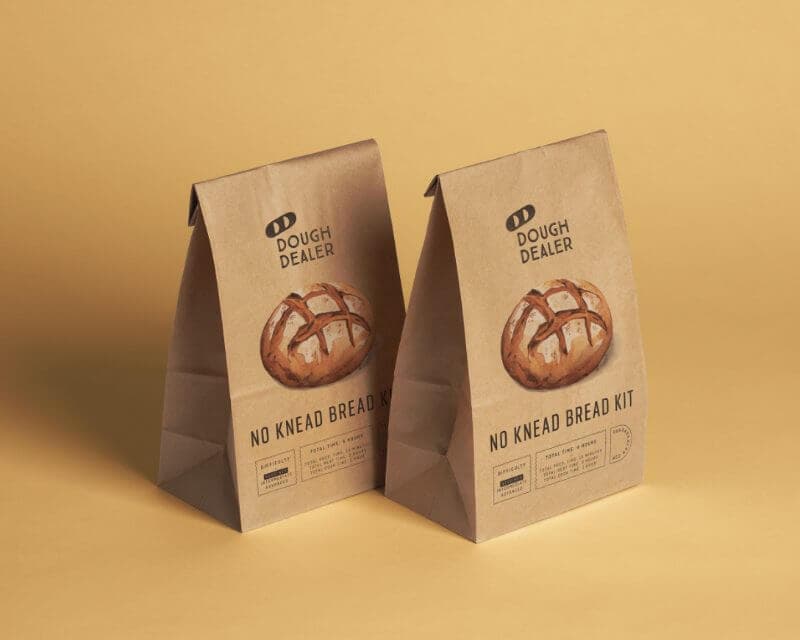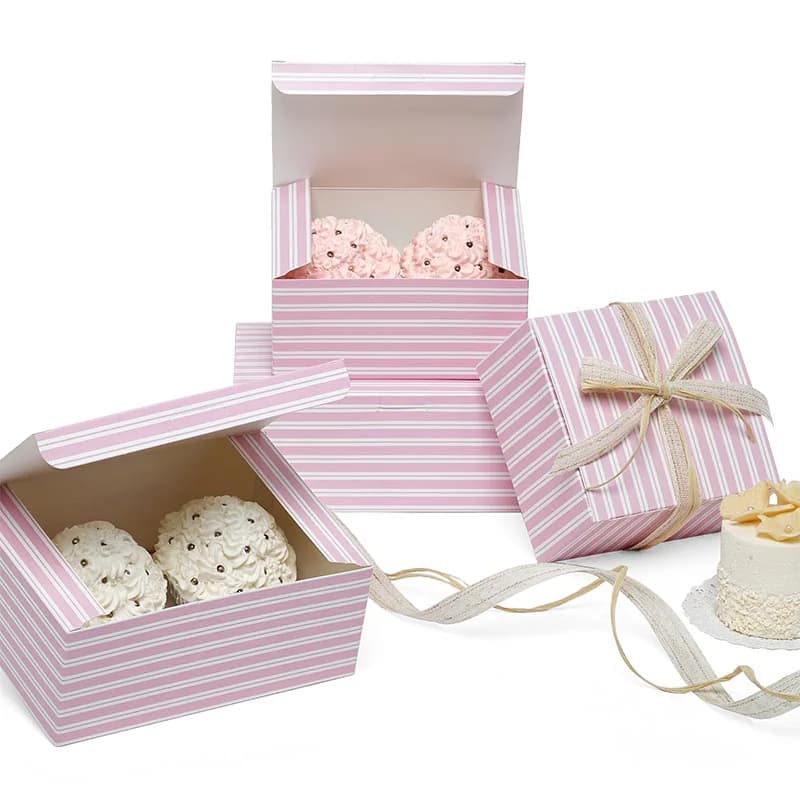How to Start a Bakery Business from Home
Learn how to start a bakery business from home with essential tips on sourcing, licensing, marketing, and managing your home-based bakery for success.

200+ buyers trust Torg for sourcing

There’s something special about homemade baked goods. Whether it’s a fresh sourdough loaf, gooey chocolate chip cookies, or delicate macarons, people love the taste of something made with love. If friends or family have ever said “You should sell these!” and you’ve thought maybe you should turn your baking into a business, the answer is yes.
Starting a bakery at home can be a great way to earn some extra income or even launch a full on bakery business. The home food industry is booming with more and more consumers wanting artisanal, small batch treats over mass produced ones. But getting started isn’t just about baking good stuff because you also need to know the food laws, pricing, marketing, and how to ship your products.
In this article, we will discover how to start a bakery business from home, from choosing what to sell to the financial side of things. Whether you’re a hobby baker or aspiring entrepreneur, you’ll find something valuable to help you turn your passion into profit.
Best Baked Goods to Sell from Home
Choosing the right products to sell is the biggest decision in your home bakery. The best sellers are easy to pack, popular with lots of people, and stay fresh for a good amount of time. Think about shelf life, ease of production, and demand in your area when choosing your menu.
Cookies and Bars
Cookies are a popular option because they are easy to carry, have a long shelf life, and are loved by all ages. The classics like chocolate chip, oatmeal raisin, shortbread, and peanut butter cookies are always a hit. Brownies, blondies, and lemon bars are included here and can be sold separately or in boxes for variety.
Cakes and Cupcakes
Specialty cakes and cupcakes are popular for birthdays, weddings, and celebrations. If you have decorating skills, you can create a niche in custom cakes. But cakes need to be handled with care and have limited shelf life. You can consider selling bundt cakes, loaf cakes, or snack cakes which are easier to pack and stock.
Bread and Rolls
Homemade bread is a customer favorite for fresh, preservative-free breads compared to store bought. Sourdough, focaccia, brioche, and multigrain loaves are top sellers. Dinner rolls, cinnamon rolls, and garlic knots are also great sellers around holidays.
Pies and Tarts
Seasonal pies like apple, pumpkin, and pecan are big sellers around Thanksgiving and Christmas. Mini pies and fruit tarts are individual servings that are easier to package and sell year round.
Pastries and Breakfast Treats
Baked goods like scones, muffins, croissants, and danishes are best for breakfast sales. Customers love grab-and-go breakfasts so these are a money-maker for those who are planning to bake as a business venture.
Specialty and Diet-Specific Items
There is a growing demand for gluten free, vegan, keto, and allergen-free baked products. If you can accommodate dietary needs, you will get customers seeking these alternatives. Think about selling sugar-free desserts, dairy-free cookies, or nut-free brownies to reach a wider customer base.
Get your home bakery off to a great start with trusted flour suppliers. Find them on Torg—sign up for free now!
How Much Does It Cost to Start a Home Bakery
Starting a home bakery can cost anywhere from $500 to $5,000, depending on equipment, ingredients, and permits. Basic costs include a commercial-grade oven, mixing tools, packaging, and licenses. Additional expenses might include marketing, insurance, and initial stock of ingredients.
Some big costs are:
- Equipment – A working oven, stand mixer, baking dishes, and storage containers can cost $300 to $2,000 depending on quality.
- Ingredients – Initial ingredient costs will range from $50 to $200, depending on your menu. Finding the right manufacturers and suppliers can help optimize these costs while ensuring high-quality ingredients.
- Licensing & Permits – Business licenses or food handler's certificate are required in some states and will cost $50 to $500.
- Packaging & Marketing – Custom labels, boxes, and social media advertising will cost an extra $100 to $500.
Start small with what you already have to keep costs low. When your business grows, reinvest your profits in better equipment and branding and you’ll be set for long term success.
Legal Requirements and Licenses for Selling Baked Goods from Home
Before you start selling your baked goods, you need to know the legal provisions in your area. Let’s say some states in America allow home food businesses through cottage food laws but the provisions vary by state. Not meeting these provisions can result in a fine or force you to close your business.
Cottage Food Laws: What You Need to Know
Cottage food laws dictate what you can and can’t sell from your home kitchen. These laws usually cover:
- Approved Baked Goods – Most states allow the sale of non-refrigerated baked goods like cookies, bread, muffins, and dry cakes. But items that need refrigeration like cream-filled pastries or cheesecakes might not be allowed.
- Where You Can Sell – Some states restrict sales to farmers markets, fairs, or direct to consumer sales. Selling online or shipping baked goods from state to state might require extra permits.
- Labeling Requirements – Most states require home bakers to include ingredients, allergens, and a notice that the food was made in a home kitchen that is not inspected by the FDA.
Do I Need Insurance to Sell Baked Goods from Home?
Yes, it's recommended to have insurance when selling baked goods from home. This typically includes liability insurance to protect against potential accidents, foodborne illnesses, or property damage. In some areas, it may be required by law, so check local regulations before starting.
Types of insurance to get:
- General Liability Insurance – Covers you for accidents, injuries, or property damage to others while you’re in business.
- Product Liability Insurance – Covers you if a customer gets sick eating your baked goods.
Other Licenses and Permits
In your state you may need:
- A Business License – Some places require this license to run a food business.
- Kitchen Inspections – Some states require home kitchens to be inspected and certified for food safety.
- Sales Tax Permit – If your state taxes food sales, you’ll need to get a sales tax ID.
Check with your state’s health department or local small business administration to find out what’s required in your area.
Setting Up Your Home Bakery Kitchen
Your kitchen is where you bake, work, produce, and think. A tidy, well-oiled kitchen allows you to be more efficient, maintain quality, and stay healthy. Most cottage food laws allow home kitchens but some states have a commercial kitchen requirement. Check your local laws before you set up.
Essential Equipment for a Home Bakery
Investing in the right tools will save you time, reduce waste, and increase consistency. Here are the essentials for your home bakery:
- Oven – A good oven will give you even baking which is key to consistency. If you bake in large quantities, a convection oven is best as it heats more evenly.
- Mixers – A stand mixer is a lifesaver for batter mixing, dough kneading, and cream whipping. A hand mixer is handy for small jobs.
- Storage Containers – Airtight containers keep ingredients fresh, prevent contamination, and keep things organized. Choose clear containers so you can see what’s inside.
- Baking Sheets and Pans – Good, non-warping bakeware means even heat conduction and no skewing. Keep several sizes for different products.
- Cooling Racks – These give you space for air to circulate around new products, prevent sogginess, and speed up the cooling process.
Maintaining a Clean and Safe Workspace
There is no compromise on having a clean, sanitary kitchen for food selling. Observe the following key practices:
- Proper Storage of Ingredients – Store raw ingredients in covered, labeled containers to avoid cross-contamination. Store perishable ingredients such as eggs and milk at the appropriate temperature.
- Periodic Sanitizing – Clean surfaces prior to and after baking. Sanitize countertops, equipment, and tools with food-grade disinfectants.
- Prevent Cross-Contamination – Keep raw and finished products apart, wash your hands often, and use food-safe gloves and hairnets if possible to ensure hygiene.
A clean kitchen not only guarantees safety but also improves efficiency, so your baking experience is smoother and more enjoyable.
How Much to Charge for Baked Goods?
Setting the right price for your baked goods is crucial to cover costs, make a profit, and stay competitive. If you charge too little, you won’t be able to sustain your business. If you charge too much, people will go elsewhere.
1. Calculate Ingredient Costs
Divide the cost of every ingredient per batch. If a bag of flour is $4 and you use a quarter of it per batch, that’s a $1 ingredient cost. Do that for all ingredients to get a total per-batch cost.
2. Include Overhead
Besides ingredients, consider costs like electricity, water, packaging, and equipment maintenance. These indirect costs must be factored into your pricing.
3. Account for Labor
Your time is worth something. Set an hourly rate for yourself and estimate how much time you spend per batch.
4. Compare with Market Prices
Research what other home bakers and local bakeries charge. This keeps you competitive and makes sure your prices match customer expectations.
Pricing Example: If it costs $5 to make a dozen cookies and you want a 50% profit margin, you’d sell them for $10 a dozen. Adjust prices according to demand, high-end ingredients, or special orders.
Baked Goods Packaging Ideas
Packaging isn’t just a container but it shapes the customer experience and is a branding tool. The right packaging keeps your baked goods fresh, safe, looking good, and reinforces your brand.

1. Kraft Bakery Boxes with Clear Windows
Kraft bakery boxes with transparent windows are a classic and eco-friendly choice for presenting baked goods. These boxes allow customers to see their treats before opening them, enhancing the unboxing experience. They’re ideal for displaying cupcakes, cookies, muffins, and pastries at farmers' markets, bakeries, and online orders.

2. Resealable Pouches for Convenience
Resealable pouches are perfect for small baked goods like cookies, granola, and brownies. They help maintain freshness while making it easy for customers to reseal the package for later consumption. These pouches come in various materials, including compostable and recyclable options, catering to eco-conscious buyers.

3. Custom-Stamped Bags or Stickers
Branded packaging is a simple yet powerful way to make your baked goods stand out. Stamping kraft paper bags with your bakery’s logo or using custom stickers on plain boxes adds a unique touch without breaking the bank. This low-cost branding strategy works well for bakeries offering takeaway treats or selling at pop-up markets.

4. Handwritten Notes or Ribbons for a Personal Touch
Adding a handwritten thank-you note, a personalized message, or tying ribbons around your packaging can create an emotional connection with customers. This approach is especially effective for special occasion orders, such as birthday cakes or wedding favors, making customers feel valued and increasing the chances of repeat purchases.
Marketing Your Home Bakery Business
Marketing your home bakery business starts with a solid brand and web presence. A business name, logo, and consistent branding will surely set you apart.
Social Media
Instagram, Facebook, and TikTok are great for showing off your bakes. Share high quality images, behind the scenes footage, and customer reviews to engage your followers. Use local hashtags and engage with potential customers to get seen.
Word of Mouth
Get happy customers to spread the word. Share with friends, family, and neighbors or start a referral program with incentives for repeat business.
Website & Online Orders
A simple website with an order form makes it easy to purchase. Have menus, prices, and pickup/delivery information so ordering is easy. Create a blog or recipe suggestions to build trust and interest among your audience.
How Do You Ship Baked Goods?
Shipping baked goods involves gentle handling to get them to customers in fresh condition. Use bubble wrap for fragile foods and select express shipping options to minimize travel time. Vacuum-sealed packages also maintain freshness.
Local delivery and in-store pickup options are also wonderful methods of delivering orders without having to pay shipping fees.
Financial Considerations: Managing Taxes and Finances
Being a home bakery business involves taking care of your finances. Poor financial management may lead to cash flow problems or tax issues. Here's how to keep everything in order:
Separate Business and Personal Finances
Open a separate business bank account to monitor income and expenses. This makes bookkeeping, tax preparation, and financial planning easier.
Plan for Your Taxes
Home bakers need to plan for income tax, self-employment tax, and sales tax. To avoid surprises:
- Save 20-30% of your income for taxes.
- Record all business expenses (ingredients, packaging, utilities).
- Seek advice from a tax pro to claim all deductions and know the tax rules.
Use Accounting Software
Tracking finances manually is a nightmare. Programs like QuickBooks, Wave, or FreshBooks help you track income, categorize expenses, and in tax filing preparation.
Good financial management keeps your home bakery in profit and in line so you can focus on what you love which is baking!
Conclusion
Starting a home bakery is more than just baking. It’s running a business, managing costs, marketing, and ensuring you comply with home bakery legal requirements. It’s a journey that requires commitment, but for those who love baking, it can be so rewarding.
Many successful bakery owners started in their own kitchens, selling to neighbours before expanding into a full-time business. Whether you’re crafting a home bakery business plan or thinking of how to sell baked goods online, taking the right steps now will set you up for success.
With the rise of the online bakery business you can reach more customers beyond your local area. If you love baking, this could be your chance to turn a baking business from home into a profitable venture.
So put on your apron, fire up your oven, and take the first step to building a home bakery that will bring joy to you and your customers. Who knows? Your next batch of cookies might just be the start of something big.
Request a Bulk Order Quote
Simple ordering, transparent pricing, delivered straight to your door

